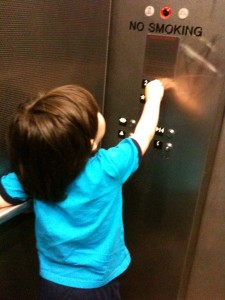Going up? What You Need to Know About the Risk of Home Elevators
 Thanksgiving is a time to visit and celebrate with family and friends. If you’re going to celebrate the holiday at someone else’s home or at a vacation rental, make sure to check if they have an elevator.
Thanksgiving is a time to visit and celebrate with family and friends. If you’re going to celebrate the holiday at someone else’s home or at a vacation rental, make sure to check if they have an elevator.
A home elevator may seem extravagant, but many beach and vacation homes have them. When you (and all your luggage) arrive at a vacation rental home that is raised up on pilings, you’ll be glad to see that elevator! Many condos now feature private elevators, and as Baby Boomers seek to “age in place,” an elevator can help them stay in their homes longer.
All of this means that the chances of your family encountering a home with an elevator are on the rise!
Whether you see the home elevator as a luxury or a necessity, one fact remains the same: they can be lethal to children. Many have a dangerous gap between the interior and exterior doors that can allow even older children to fit between those doors and become trapped when the doors lock automatically. When the elevator is called to another floor, the trapped child can be crushed, causing death or catastrophic injuries. Incredibly, the industry has known about this potentially deadly design flaw for more than 80 years, yet it has failed to adopt voluntary standards to make the elevators safer.
At least 55 child deaths have occurred in residential elevators since 1967. Countless more, including two of our clients, have been seriously injured. That’s why Cash Krugler & Fredericks partnered with the Safety Institute to elevator petition that the US Consumer Product Safety Commission initiate mandatory rulemaking to set safety standards for residential elevators. We’ve made elevator safety a key focus of our law practice.
If your Thanksgiving holiday travels take you to a place that features a residential elevator, chances are you will receive no warning about this potential hazard. Here area a few steps you can take to keep your family safe:
- Ask the realty or property management company if they are familiar with the issue of child entrapment between the elevator doors.
- Ask about elevator safety features in advance and specifically whether a child can fit between the doors.
- Ask if the elevator has a light curtain to detect a child in the space between the doors.
- Ask whether the hoistway doors have space guards or other devices to reduce the gap where children become entrapped.
- Educate and warn your children of the dangers associated with entrapment between the doors.
- Do not allow young children to use the elevator without a responsible, older person present.
- Take the stairs when possible – the exercise will do you good!
– Andy Cash

